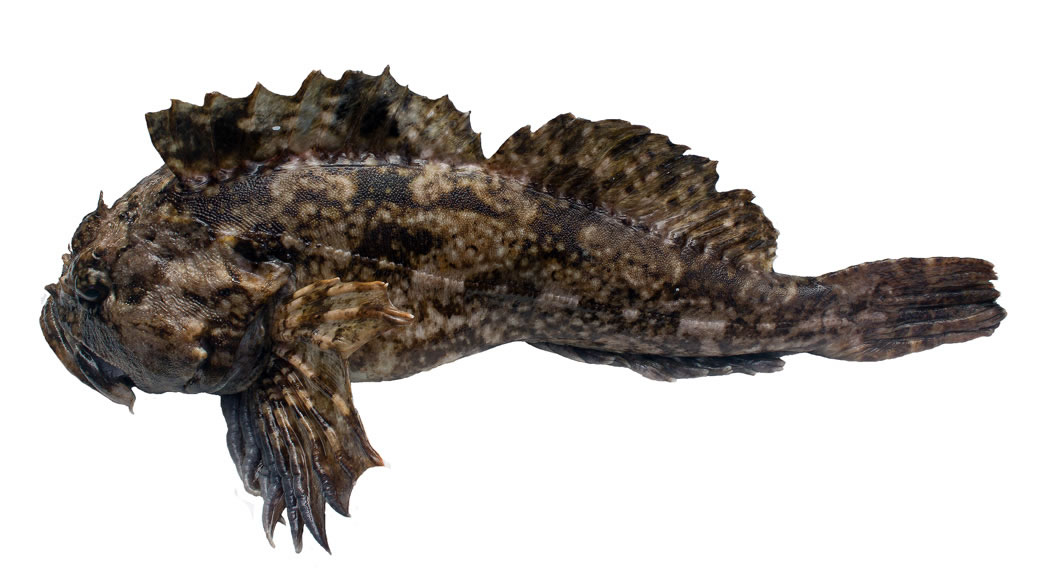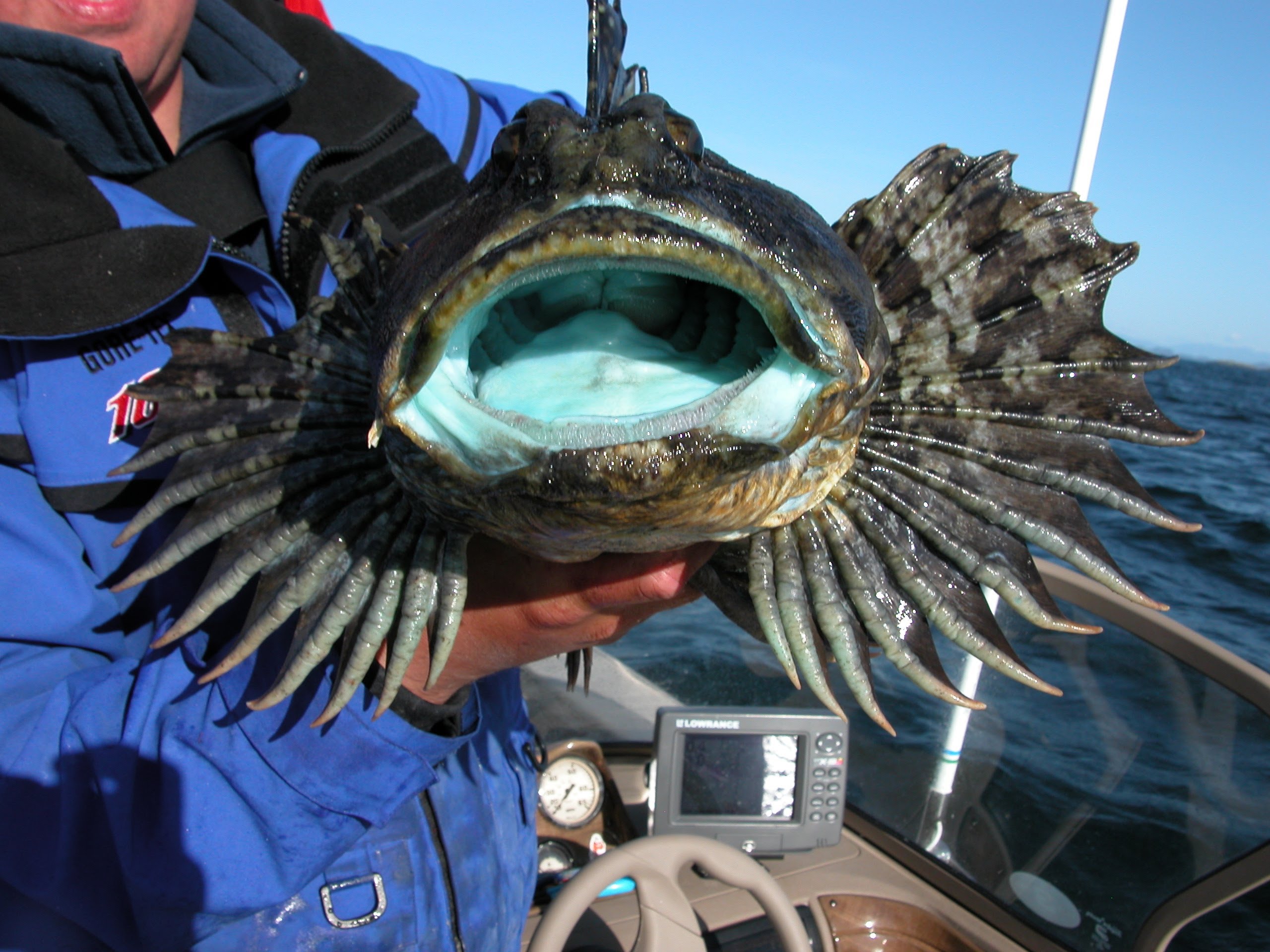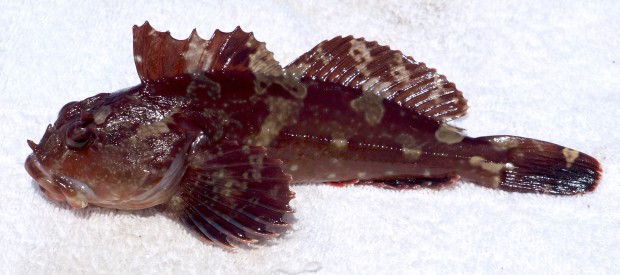
Scorpaenichthys marmoratus
FAMILY
Cottidae
TAXONOMY
Scorpaenichthys marmoratus Ayres, 1854, San Francisco, California,
United States. Has at times been separated into its own
FAMILY
, Scorpaenichthyidae.
OTHER COMMON NAMES
English: Giant marbled sculpin, giant sculpin.
PHYSICAL CHARACTERISTICS
This relatively huge fish (to 30 in [76 cm] and 30 lb [13.6 kg])
has a marbled color pattern that incorporates light and dark
gray, brown and beige, or olive green shades. The young often
have shades of red. Scales are covered by skin. This is the only
sculpin with an unpaired flap of skin on the tip of the snout.
The pelagic juvenile is metallic blue, shaped like a blunt-nosed,
short salmon smolt.
DISTRIBUTION
Central Baja California, Mexico, to Sitka, southeast Alaska.
HABITAT
Inhabits rocky reefs from very shallow depths down to the limits
of kelp growth, sometimes deeper. They tend to hide in
kelp beds, sometimes literally hanging in the seaweed. Juveniles
occur in tidepools.
BEHAVIOR
An ambush predator, the cabezon tends to be sedentary, relying
on the camouflage of its coloring. If stranded in kelp during
low tide, a cabezon flares its gill covers and holds still.
Pelagic juveniles are attracted to turbulence in a laboratory situation,
and will strike at prey in the most rapid flows they can
find, which may lead them to settle on exposed shorelines.
FEEDING ECOLOGY AND DIET
Kelp crabs, other crabs, shrimp, snails, clams, worms, or small
fish.
REPRODUCTIVE BIOLOGY
Males guard clusters of egg masses during late winter and
spring. The egg masses vary in color from burgundy to purple
to dark green. The eggs are toxic to birds and mammals that
might otherwise predate on them during low tide exposure.
Small sculpins crowd in to predate on cabezon larvae hatching
at the edges of the nest site, without the male paying any attention
to their activity.
CONSERVATION STATUS
Not listed by the IUCN. Cabezons show signs of being overfished
through their southern range. Depletion is evident in
southern British Columbia, where they are not the target of either
sport or commercial fishing, although bycatch landings
occur in both fisheries. Commercial setline fishing has been directed
at cabezons in California for over half a century, and
they are considered a top sport angling species there as well.
Cabezon spearfishing is popular because of the ease of spearing
these big fish.
SIGNIFICANCE TO HUMANS
The firm flesh of the cabezon is favored by many. It is a popular
sport fish with bait anglers, especially in California.
Other popular Animals
Photo Gallery of - Cabezon




 Animalia Life
Animalia Life